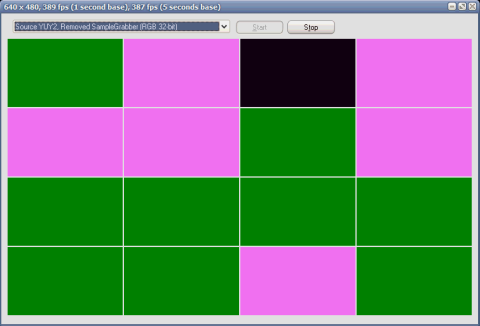This continues the topic raised by previous post. As fairly noticed by The March Hare, video renderer is using hardware overlay and the benchmark is incorrect if we are to extrapolate the performance to scenario with multiple video renderers.
So, an updated test application creates 16 video renderers with 16 threads pumping two meida samples through each of the 16 filter graphs.
The screen shot shows that there is only one video overlay in use (which image was not captured and blackness is shown instead), so results may be inaccurate for one of the graph among 16. In this simple test I disregard this.
Here go the results (in all tests CPU usage is maxed out):
- YUY2 Source -> VMR: 3,480 fps
- YUY2 Source -> AVI Decompressor (converts to 24-bit RGB) -> Sample Grabber (without processing) -> Color Space Converter (converts to 32-bit RGB) -> VMR: 560 fps
- YUY2 Source -> AVI Decompressor (converts to 32-bit RGB) -> Color Space Converter -> VMR: 390 fps




